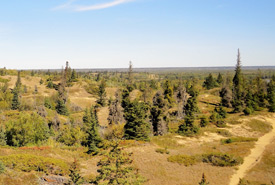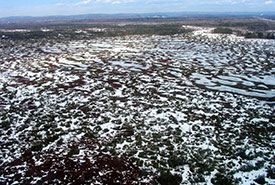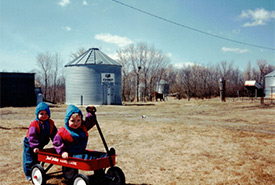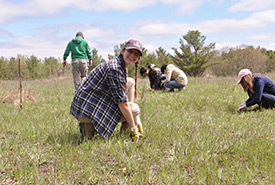Adjusting to change

Assiniboine Delta, MB (Photo by Jordan Becker)
“According to Darwin’s Origin of Species, it is not the most intellectual of the species that survives; it is not the strongest that survives; but the species that survives is the one that is able best to adapt and adjust to the...
Something’s Fishy: Polar opposites

Polar bear mother and cub, Jones Sound, Nunavut (Photo by NCC)
Polar bears are the largest bear species and land carnivore in the world. They are found in the Arctic, where they scour sea ice and coasts for their next meal. Two-thirds of the global population of polar bears is found in Canada. The...
Reach new heights: Take your adventure to another level by exploring the iconic hoodoos

Dutch Creek Hoodoos, BC (Photo by NCC)
Craggy spires rise up and tower over the north end of Columbia Lake. A result of thousands of years of glaciation, followed by erosion from meltwater and weather, the Dutch Creek Hoodoos are a testament to the grand geologic forces of the...
In the depths of the Lac-à-la-Tortue bog

Lac-à-la tortue (Photo by NCC)
Peatlands are wetlands composed of plant residues accumulated over thousands of years. Although they are widespread in Quebec, many people don't know about them. However they provide us with many essential services, such as water filtration and...
Acknowledging change

Growing up on a farm in southwestern Manitoba, some of my clearest memories are of the extreme temperatures I experienced. (Photo courtesy of Steven Anderson)
“Everything changes and nothing stands still.” ~ Heraclitus of Ephesus, as quoted by Plato Growing up on a farm in southwestern Manitoba, some of my clearest memories are of the extreme temperatures I experienced in that lovely...
Wetlands in the Frontenac Arch

A wetland in the Frontenac Arch, ON (Photo by NCC)
Late last autumn, I was travelling with a friend through the Frontenac Arch. For me, this is a daily occurrence, but I sometimes forget that other people don’t see forests, lakes and wetlands on their morning commutes. It’s always a...
Pikas and their islands in the Rockies

American pika (Photo by Allison Haskell)
What’s your favourite animal? It’s a common question for many of us with a fascination for wildlife and a passion for conserving the natural world around us. When I answer that my favourite species is American pika, some people are...
Where are they now? Intern Alumni Spotlight: Victoria Shore

Victoria Shore planting native species while working as an intern at NCC (Photo by NCC)
This blog marks the seventh Intern Alumni Spotlight — a series highlighting some of the individuals who have interned with the Nature Conservancy of Canada (NCC) in the past. Last month, Ryan Dudragne was featured as the Intern Alumni...
A cozy nest for a common gartersnake

Common gartersnake (Photo by Hugo Tremblay-CERFO)
You won’t be surprised to hear that my fellow scientists spend a lot of time in the field in the spring and summer (for species inventories, invasive species control, property monitoring, etc.), but when the snow flies and temperatures drop...
Measuring what matters: Biocapacity and ecological footprint

Participants of the joint Global Footprint Network and York University workshop (Photo courtesy of Martin J. Bunch, PhD)
The most-used measure of a country’s progress is its gross domestic product (GDP) — the value of the goods and services produced over a period of time, such as a year. A huge drawback of GDP, however, is that it does not fully reflect...

